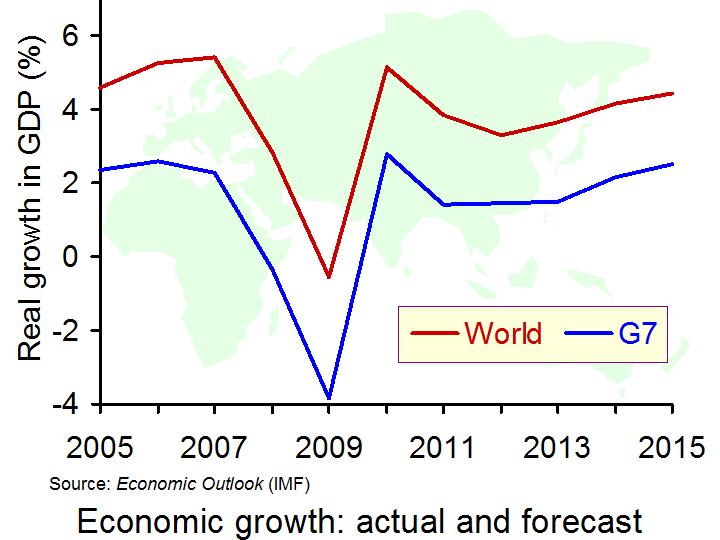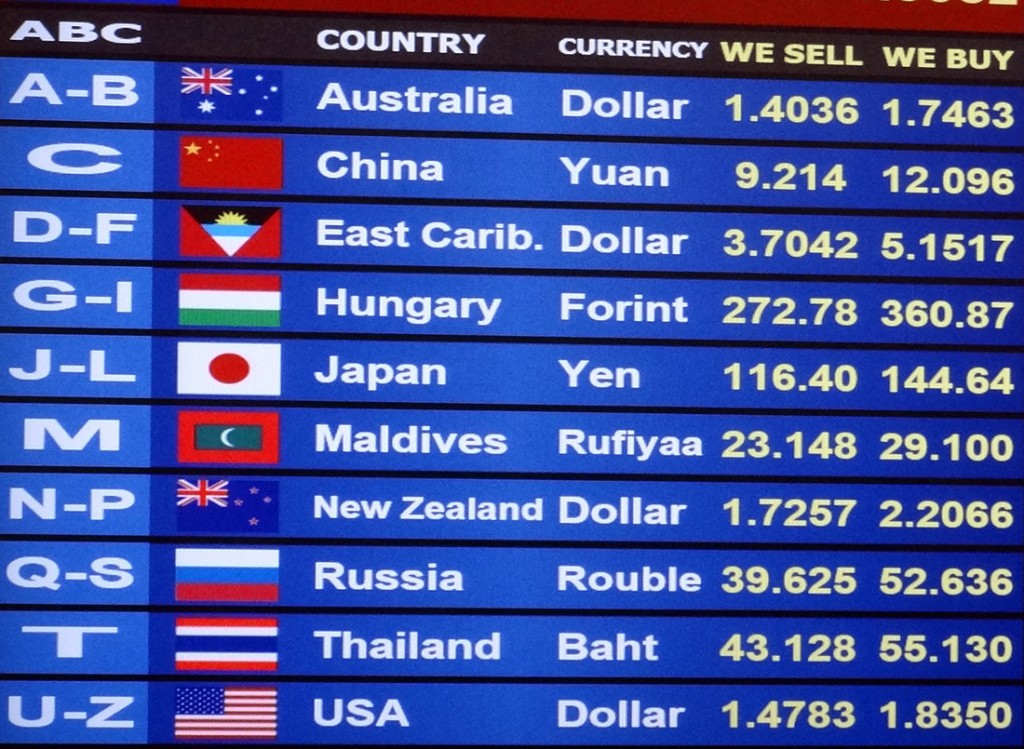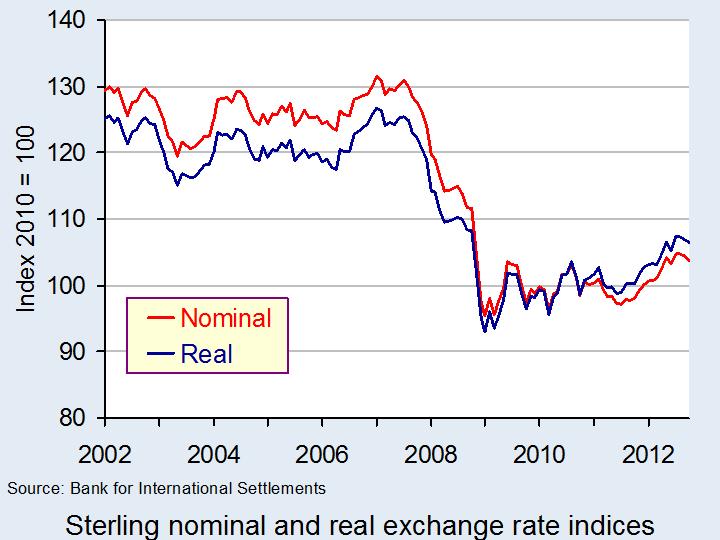 While the Western world has struggled with economic growth for the past 6 years, emerging economies such as China, Brazil and India have recorded some very high rates of growth. Throughout 2012, there were signs that these economies were not going to be the saviour of the global economy that we all thought. But, as we enter 2013, is it these economies that still hold the hope of the West for more positive figures and better economic times?
While the Western world has struggled with economic growth for the past 6 years, emerging economies such as China, Brazil and India have recorded some very high rates of growth. Throughout 2012, there were signs that these economies were not going to be the saviour of the global economy that we all thought. But, as we enter 2013, is it these economies that still hold the hope of the West for more positive figures and better economic times?
The article below from BBC News, in particular, considers the year ahead for the Asian economies and what it might mean for the Western world. Although these countries are by no means safeguarded against the impending approach of the US economy to their fiscal cliff or the ongoing eurozone crisis, they have seemed to be more insulated than the rest of the world. A crucial question to consider is whether this will continue. Furthermore, are the growth levels and policies of a country such as China sustainable? Can it continue to record such high growth rates in the face of the global economic situation?
The Japanese economy has been in serious trouble for a couple of decades, but measures to boost growth for this economy are expected. If these do occur, then western economies may feel some of their positive effects. At present, there is a degree of optimism as we enter the New Year, but how long this will last is anybody’s guess. The following articles consider the year ahead.
Asian economies face regional and global challenges BBC News (1/1/13)
Asia faces hard road ahead China Daily, Haruhiko Kuroda and Changyong Rhee (31/12/12)
Asia to continue rise despite US fiscal cliff Economic Times, Sugata Ghosh (1/1/13)
‘3.6% growth’ for global economy next year China Daily, Alvin Foo (28/12/12)
Asian economies surge ahead despite global slowdown Coast Week, Ding Qilin and Hu Junxin (4/1/13)
Global grind The Economist, Robin Bew (21/11/12)
Questions
- Why have the Asian economies been more insulated to the global economic conditions over the past few years, in comparison with the Western world?
- What challenges will the global economy be facing over the coming year?
- What challenges are the Asian economies facing? How different are they from the challenges you identified in question 3?
- Why is the rate of exchange an important factor for an economy such as Japan?
- What does a low exchange rate for the yen mean for European countries? Is it likely to be seen as a good or bad thing? What about for South Korea? Use a diagram to help you answer this question.
- Why is the economic situation in countries such as China and India so important for the rest of the global economy? Use a diagram to illustrate this.
 The UK is an island-economy. Therefore, trade is a crucial determinant of our economic performance. The competitiveness of our exports, in part, is affected by the exchange rate. Floating exchange rates are notoriously volatile. However, since the autumn of 2007 we have observed a significant depreciation of the UK exchange rate. In other words the number of units of many foreign currencies to the British pound has fallen. A depreciation helps to make our exports more competitive abroad. We detail the extent of this depreciation and any signs of a reversal in this pattern.
The UK is an island-economy. Therefore, trade is a crucial determinant of our economic performance. The competitiveness of our exports, in part, is affected by the exchange rate. Floating exchange rates are notoriously volatile. However, since the autumn of 2007 we have observed a significant depreciation of the UK exchange rate. In other words the number of units of many foreign currencies to the British pound has fallen. A depreciation helps to make our exports more competitive abroad. We detail the extent of this depreciation and any signs of a reversal in this pattern.
Rather than look at the British pound (or any currency) against the many foreign currencies separately we can look at the average exchange rate against a whole bundle of currencies. The average rate is calculated by weighting the individual exchange rates by the amount of trade between Britain and the other countries. This trade-weighted exchange rate is known as the effective exchange rate.
In analysing the competitiveness of the exchange rate, we can go one step further and adjust for the terms of trade. This means that we adjust for the average price of our exports relative to the average price of those goods we import. Therefore, as well as the nominal (actual) effective exchange rate we can calculate a real effective exchange rate. If the average price of our exports rises relative to the average price of imports, the real effective exchange rate rises relative to the nominal rate. It means that we are able to obtain a larger volume of imports from selling a given volume of exports.
 The chart shows the nominal (actual) and real effective exchange rate for the British pound since 2002. The chart shows clearly how from the autumn of 2007 the effective exchange rate both in nominal and real terms began to fall sharply. Over the period from September 2007 to January 2009 the nominal effective exchange rate fell by 26 per cent. After adjusting for the relative price of exports to imports, we find the real effective exchange rate fell by 24 per cent. In other words, the British pound depreciated by close to one-quarter in just 16 months.
The chart shows the nominal (actual) and real effective exchange rate for the British pound since 2002. The chart shows clearly how from the autumn of 2007 the effective exchange rate both in nominal and real terms began to fall sharply. Over the period from September 2007 to January 2009 the nominal effective exchange rate fell by 26 per cent. After adjusting for the relative price of exports to imports, we find the real effective exchange rate fell by 24 per cent. In other words, the British pound depreciated by close to one-quarter in just 16 months.
If we move the clock forward, we observe a mild appreciation of the British pound since July 2011. In nominal terms, the effective exchange rate has appreciated by 6.8 per cent while in real terms it has appreciated by 7.8 per cent. Nonetheless, if we compare September 2007 with October 2012, we find that the nominal effective exchange rate for the British pound is 19 per cent lower while the real effective exchange rate is approximately 13 per cent lower. This still constitutes a major competitive boost for our exporters.
Data
BIS effective exchange rate indices Bank for International Settlements
Articles
Sterling gains as eurozone weakness prevails Reuters UK, Phillip Baillie (7/12/12)
Pound steady after Autumn Statement Financial Times, Alice Ross (5/12/12)
Sterling at risk after triple-A warning, outlook negative Reuters UK, Phillip Baillie (6/12/12)
Questions
- Explain how the foreign demand for goods and assets generates a demand for British pounds. How will this demand be affected by the foreign currency price of the British pound, i.e. the number of foreign currency units per £1?
- Explain how the demand by British residents for foreign goods and assets generates a supply of British pounds. How will this supply be affected by the foreign currency price of the British pound, i.e. the number of foreign currency units per £1?
- What factors are likely to shift the demand and supply curves for British pounds on the foreign exchange markets?
- Illustrate the effect of a decrease in the demand for British goods and assets on the exchange rate (i.e. the foreign currency price of the British pound) using a demand-supply diagram.
- What is the difference between a nominal and a real effective exchange rate? Which of these is a better indicator of the competitiveness of our country’s exports?
 Australia was one of the few economies that seemed to be somewhat insulated from the 2008/09 recession and credit crunch. However, with the UK now back in recession and global economic conditions worsening in much of Europe, Australia has now joined the list of countries that are experiencing economic conditions that are ‘weaker than forecast’.
Australia was one of the few economies that seemed to be somewhat insulated from the 2008/09 recession and credit crunch. However, with the UK now back in recession and global economic conditions worsening in much of Europe, Australia has now joined the list of countries that are experiencing economic conditions that are ‘weaker than forecast’.
Today’s world involves economies that are increasingly interdependent, hence the spread of the world economic slowdown. As such, with weak global demand, Australia has started to feel the effects, with demand for its goods and raw materials falling. This has led Australia’s central bank – the Reserve Bank of Australia – to cut its key interest rate (the ‘cash rate’) by more than expected. The rate had been at 4.25% and it was widely believed that a 0.25 percentage point cut would occur. However, the central bank cut the cash rate rate to 3.75% to counter the weakening conditions. The Reserve Bank said:
“This decision is based on information received over the past few months that suggests that economic conditions have been somewhat weaker than expected, while inflation has moderated …Growth in the world economy slowed in the second half of 2011, and is likely to continue at a below-trend pace this year.”
Banks’ interest rates have been falling in Australia for the past few months and this latest cut will do much to help financially squeezed households. Data show that Australian house sales have fallen, as have house prices, and retail sales have fared little better.
Lower interest rates are often a tool used to steer inflation and the Australian central bank may not have been as willing to cut rates had the inflation rate not come down in recent months. Keeping consumer prices under control remains a top priority for the central bank and so it will be interesting to see the impact that these rate cuts will have on the Australian economy.
Articles
Australia cenbank surprises with aggressive half point rate cut Reuters, Wayne Cole (1/5/12)
Australia cuts rates by than forecast to 3.75% BBC News (1/5/12)
Banks unlikely to pass on full rate cut The Australian, Wall Street Journal, Peter Trute (1/5/12)
Australia cuts rate to support economy Financial Times, Neil Hume (1/5/12)
Australia slashes interest rates by 0.5pc to boost economy The Telegraph (1/5/12)
Australia cuts interest rates as economy slows Guardian, Phillip Inman (1/5/12)
Banks must pass on rate cut: businesses Sydney Morning Herald, Ehssan Veiszadeh (1/5/12)
Bond prices rally after rate cut Sydney Morning Herald (1/5/12)
Surplus remains appropriate: Swan Sydney Morning Herald, Colin Brinsden (1/5/12)
Webcasts
 Reserve Bank of Australia Cuts Rates by 50 Basis Points to 3.75% CNBC video, Lauren Rosborough (1/5/12)
Reserve Bank of Australia Cuts Rates by 50 Basis Points to 3.75% CNBC video, Lauren Rosborough (1/5/12)
 Further `Modest’ RBA Easing Possible, ANZ Says Bloomberg, Tony Morriss (1/5/12)
Further `Modest’ RBA Easing Possible, ANZ Says Bloomberg, Tony Morriss (1/5/12)
 Australia’s central bank shifts focus to growth BBC News, Duncan Kennedy (1/5/12)
Australia’s central bank shifts focus to growth BBC News, Duncan Kennedy (1/5/12)
Questions
- Which factors will a central bank consider when setting interest rates?
- Explain the components of aggregate demand that will be affected by a lower rate of interest.
- Using diagrams to illustrate the process, explain both the interest-rate and the exchange-rate transmission mechanisms of the fall in interest rates.
- How are interest rates used to target inflation?
- How will lower rates of interest help the Australian economy recover from weakening global economic conditions?
- Why are Australia’s banks unlikely to pass on the full rate cut to consumers?
- Why did bond prices rise and the Australian dollar depreciate after the rate cut? Why does this suggest that a 0.5% cut was greater than anticpated by markets?
 Germany is the world’s fourth largest economy and Europe’s largest. Part of its strength has come from its exports, which last year increased by 11.4% to $1.3 trillion – the first time it had ever exceed the $1 trillion mark. Germany, however, is by no means the country with the largest export sector – that mantle was taken from them by China, whose exports rose 20.3% last year to reach $1.9 trillion.
Germany is the world’s fourth largest economy and Europe’s largest. Part of its strength has come from its exports, which last year increased by 11.4% to $1.3 trillion – the first time it had ever exceed the $1 trillion mark. Germany, however, is by no means the country with the largest export sector – that mantle was taken from them by China, whose exports rose 20.3% last year to reach $1.9 trillion.
At the same time as exports have been rising from Germany, imports have also increased, showing a recovery in domestic demand as well. Despite this, Germany’s foreign trade surplus increased slightly to €158.1 billion (from €154.9 billion).
However, in the last month of 2011, its export growth did slow – the fastest drop in nearly 3 years – and that is expected to signal the trend for 2012. As the eurozone debt crisis continues to cause problems, German exports have been forecast to grow by only 2% this year, with economic growth expected to be as low as 0.7%. This is a marked change from last year, where the Germany economy grew by some 3%. Help for the eurozone is unlikely to come form Europe’s second largest economy, France, where growth in the first 3 months of 2012 is expected to be zero and figures have shown a widening trade deficit, with issues of competitiveness at the forefront. The following articles look at Germany’s prowess in the export market and the likely developments over the coming year.
German exports drop is steepest in nearly 3 years Reuters (8/2/12)
German exports set record of a trillion euros in 2011 BBC News (8/2/12)
German exports broke euro1 trillion mark in 2011 The Associated Press (8/2/12)
Surprise drop in German industrial output Telegraph, Angela Monaghan (7/2/12)
French trade deficit hits high, competitiveness at issue Reuters (7/2/12)
French trade deficit casts shadow on campaign Financial Times, Hugh Carnegy (7/2/12)
German exports fall at fastest rate in three years, sparks fears over Europe’s bulwark economy Telegraph, Louise Armitstead (8/2/12)
Questions
- What is meant by a trade surplus?
- Briefly examine some of the factors that may have contributed to Germany’s rising exports throughout 2011.
- How has the eurozone debt crisis impacted the Germany economy and in particular the export sector?
- The articles that look at France refer to a growing trade deficit, with competitiveness being a key issue. What is meant by competitiveness and why is the French economy suffering from a lack of it?
- Does France’s membership of a single currency reduce its ability to tackle its competitiveness issues?
- Why is German growth expected to remain sluggish throughout 2012? Given that Germany is a member of the eurozone, what government policies are open to the government to boost economic growth?
- China has overtaken Germany as the largest exporter, with growth of 20.3% in 2011. What factors have allowed Chinese exports to grow so quickly?
Growth figures across many countries still remain vulnerable, including the UK, where growth lies at only 0.5%. Despite some countries starting to grow more rapidly, the numbers still remain close to 0. The eurozone area is a particularly interesting case, as there are so many individual countries that are all interdependent. So, despite growth in the eurozone area increasing to 0.8% in the first three months of 2011, which is higher than that for the UK, this doesn’t explain the full story in the area. Germany has grown by 1.5% and it is this figure which has largely contributed to the 0.8% figure. It was also helped by growth of 1% in France and incredibly of 0.8% in Greece, despite its huge debts. The growth in Greece is allegedly down to a better export market.
Why then wasn’t the figure higher? Whilst countries like Germany showed an acceleration in demand, growth remained sluggish in Spain and Italy at only 0.1% and 0.3% respectively and Portugal faced the second consecutive quarter of negative growth and so has officially gone back into recession. This situation may get even worse as the austerity measures put in place by the EU and IMF take effect. One of the key arguments against joining the eurozone is that the policies implemented are never going to be in the best interests of any one country. With some countries beginning to grow more quickly and others remaining sluggish, what should happen to macroeconomic policy? Should interest rates remain low in a bid to boost aggregate demand or should they rise as other countries see accelerating growth?
An interesting question here is why do countries, such as Italy, Spain and Portugal struggle, whilst France and Germany begin their recovery? One obvious explanation is that Germany and France are at the heart of the eurozone, where as Spain, Portugal and Italy remain on the periphery. Ken Wattret at BNP Paribas said:
“The periphery are getting the worst of both worlds. The core countries like Germany are doing really well and that’s keeping the euro strong, and it’s making the ECB [European Central Bank] more inclined to tighten policy.”
If the ECB do go ahead with a tightening of monetary policy, it could spell further trouble for those countries on the periphery of the Euro area that would benefit from interest rates remaining low and a weaker Euro. The following articles look at the conflicts within the 2-speed Eurozone.
Articles
Sterling lags euro on growth outlook; trails dollar Reuters (13/5/11)
Eurozone’s growth surprises as UK lags behind Telegraph, Emma Rowley (13/5/11)
Eurozone’s economic growth accelerates BBC News (13/5/11)
Solid finances help drive German economic revival Financial Times, Ralph Atkins (13/5/11)
UK’s economy in the slow lane as eurozone surges Scotsman, Scott Reid (14/5/11)
Euro growth eclipses rivals despite north-south divergences AFP, Roddy Thomson (13/5/11)
Eurozone economic growth data prompts political clash BBC News (13/5/11)
Fresh fears for UK economy as Germany and France power ahead Guardian, Larry Elliott (13/5/11)
Portugal’s GDP is set to shrink this year and next Wall Street Journal, Alex Macdonald and Patricia Kowsmann (14/5/11)
Data
UK GDP Growth National Statistics
Eurozone growth rates ECB
EU countries’ Growth rates of GDP in volume Eurostat News Release (13/5/11)
Real GDP growth rate for EU countries and applicant countries, EEA countries and USA and Japan Eurostat
Questions
- What has contributed to the German, French and Greek economies surging ahead?
- Why is there such a north-south divergence in growth within the eurozone?
- What is the most suitable monetary policy for those countries growing more strongly?
- What is the best direction for interest rates and hence the value of the euro for countries, such as Spain, Italy and Portugal?
- ’The UK economy would be in a worse position if it were a member of the eurozone’. What are the arguments (a) for and (b) against this statement?
- What is the relationship between interest rates, the exchange rate and growth?
 While the Western world has struggled with economic growth for the past 6 years, emerging economies such as China, Brazil and India have recorded some very high rates of growth. Throughout 2012, there were signs that these economies were not going to be the saviour of the global economy that we all thought. But, as we enter 2013, is it these economies that still hold the hope of the West for more positive figures and better economic times?
While the Western world has struggled with economic growth for the past 6 years, emerging economies such as China, Brazil and India have recorded some very high rates of growth. Throughout 2012, there were signs that these economies were not going to be the saviour of the global economy that we all thought. But, as we enter 2013, is it these economies that still hold the hope of the West for more positive figures and better economic times?



